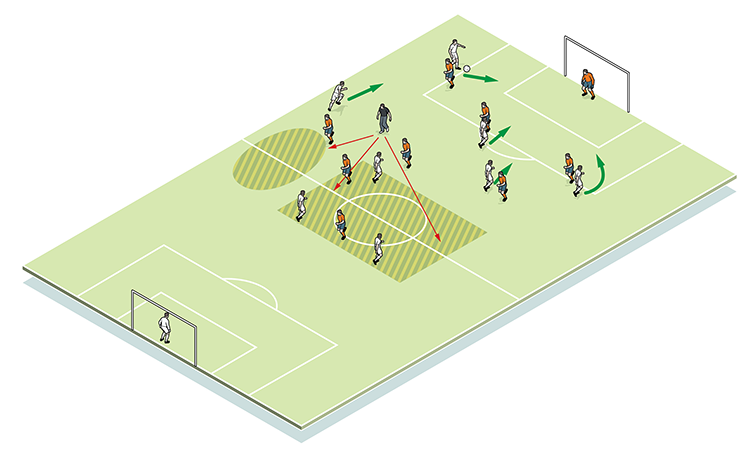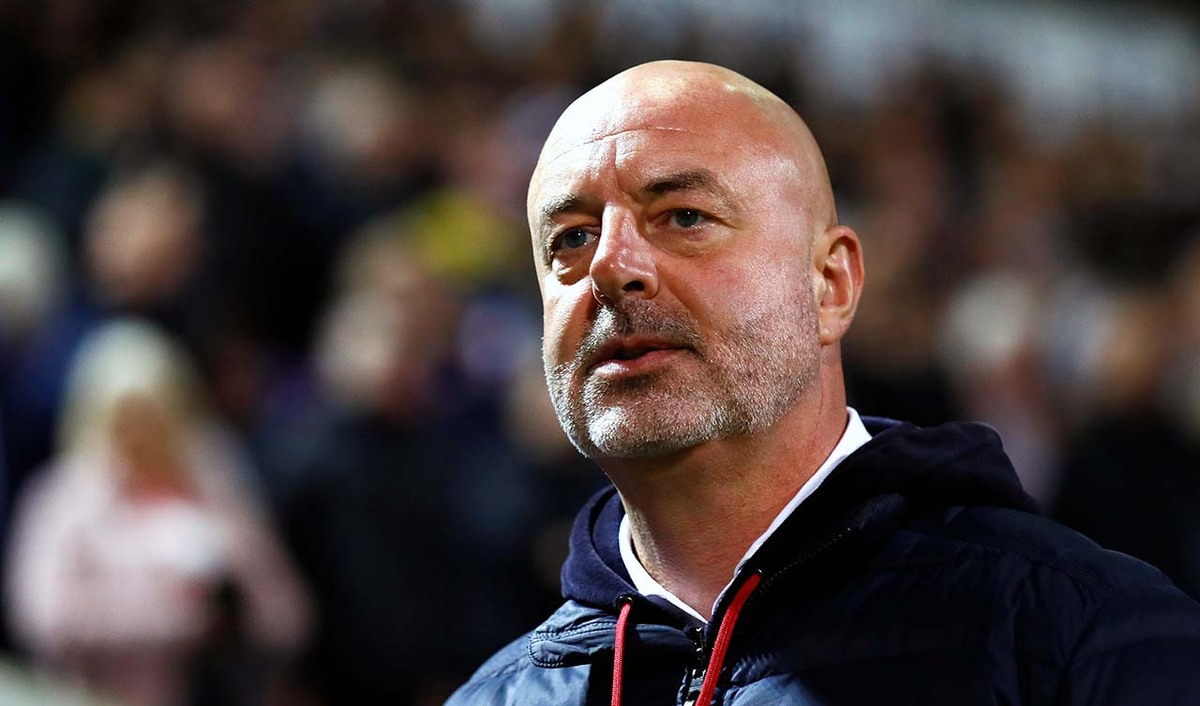




OUR BEST EVER OFFER - SAVE £100/$100
JOIN THE WORLD'S LEADING PROFESSIONAL DEVELOPMENT PROGRAMME
- 12 months membership of Elite Soccer
- Print copy of Elite Player & Coach Development
- Print copy of The Training Ground
You are viewing 1 of your 1 free articles
Cutting out counter-attacks
Analysis at the end of our 2008/09 League Two campaign showed we needed to develop a new collective responsibility to defend against the counter-attack. We knew this would increase our potential to keep clean sheets whilst also ensuring that we had players in good areas of the pitch in order to regain and maintain possession.
| Area | 60x40 yards |
| Equipment | Goals, cones, balls |
| No. of Players | 18 (9v9 in 3-2-3 formations) |
Analysis at the end of our 2008/09 League Two campaign showed we needed to develop a new collective responsibility to defend against the counter-attack. We knew this would increase our potential to keep clean sheets whilst also ensuring that we had players in good areas of the pitch in order to regain and maintain possession.
Our aim was therefore to produce a session that helped the players understand better their roles and responsibilities both in and out of possession, focusing on three key areas of the pitch.
What do I get the players to do?
Play kicks off as it would in a standard game - the coach is involved on the pitch. One of the attacking team’s full-backs comes forward (in the example given it’s the left-back). When this player advances into the opposition half, the coach serves a new ball randomly to the other team, exposing opportunities to counter-attack. After the counter-attack has occurred, play is brought back to highlight vulnerable areas of the pitch.
The move is then run again. This time, better defensive organisation and greater balance is offered by instructing the left-back to support from deeper, whilst showing the remaining defenders and midfielders the benefit of forming a four-man square around the vulnerable centre circle area. Effective recovery runs are now possible.
1

2

3

What are the key things to look for technically/tactically?
Players must be aware of the benefit of screening and protecting the centre of the pitch, as this is the key area that is exploited in counter-attacks. There must be a collective responsibility in maintaining the defensive structure even when developing attacks.
How do I progress the session?
Progress the session by expanding play onto a full-size pitch, with 11v11. Set up scenarios where, as play develops, each man is aware of how they need to move in terms of distance and direction.
In phase one, a proactive defensive strategy is deployed, using two central midfield players to prevent balls into strikers should possession be lost.

In phase two, which is the middle third, two central midfielders cover space in order to maintain possession. Furthermore, their positions offer opportunities to regain possession. The goalkeeper advances and full-backs show awareness of covering space behind them.

In phase three, a ball is about to be delivered into the box, therefore players must be prepared for the possibility that the other team might win possession. In this instance, the central midfield players protect the centre of the pitch to prevent a counter-attack. Defenders who have pushed forward are ready to drop back.

Related Files
Editor's Picks
Attacking transitions
Deep runs in the final third
Using the goalkeeper in build-up play
Intensive boxes drill with goals
Penetrating the final third
Creating and finishing
My philosophy
Pressing initiation
Compact team movement
Coaches' Testimonials

Alan Pardew

Arsène Wenger

Brendan Rodgers

Carlos Carvalhal

José Mourinho

Jürgen Klopp

Pep Guardiola

Roy Hodgson

Sir Alex Ferguson

Steven Gerrard
Coaches' Testimonials

Gerald Kearney, Downtown Las Vegas Soccer Club

Paul Butler, Florida, USA

Rick Shields, Springboro, USA

Tony Green, Pierrefonds Titans, Quebec, Canada
Join the world's leading coaches and managers and discover for yourself one of the best kept secrets in coaching. No other training tool on the planet is written or read by the calibre of names you’ll find in Elite Soccer.
In a recent survey 92% of subscribers said Elite Soccer makes them more confident, 89% said it makes them a more effective coach and 91% said it makes them more inspired.
Get Monthly Inspiration
All the latest techniques and approaches
Since 2010 Elite Soccer has given subscribers exclusive insight into the training ground practices of the world’s best coaches. Published in partnership with the League Managers Association we have unparalleled access to the leading lights in the English leagues, as well as a host of international managers.
Elite Soccer exclusively features sessions written by the coaches themselves. There are no observed sessions and no sessions “in the style of”, just first-hand advice delivered direct to you from the coach.







